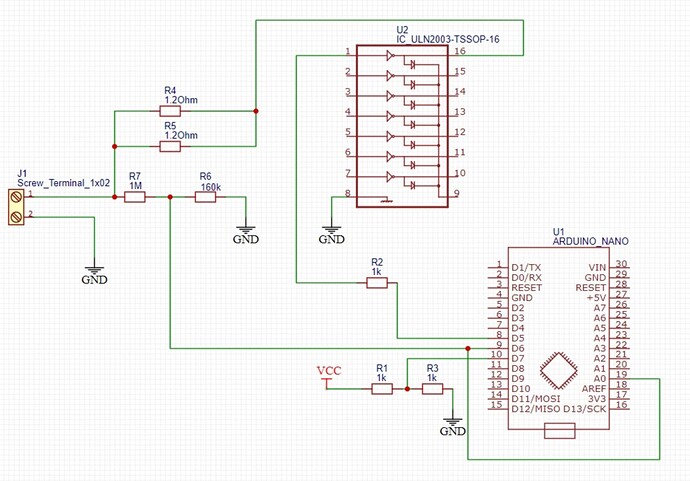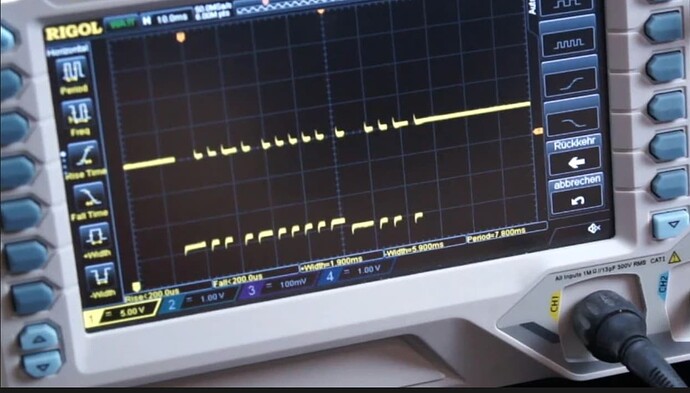Hi all,
I started a little project for fun, the aim is to interact with my apartment's intercom system to receive phone notifications when someone rings the bell and to open the building door remotely.
I followed in the footsteps of someone else, and thought I would make a small modification to power the circuit from the intercom directly, so I can hide the whole thing in the unit next to the door.
I got the first part running, reading and parsing the line code to recognize doorbell signals, while powering the Arduino over USB.
I'm struggling with powering it off the intercom wires now. The intercom system is just two wires, that have about DC 25V on them, fluctuating down to about 20V when messages are being sent. After some googling I figured I would try using a L7805CV to bring that down to a stable 5V and power my Arduino Nano RP2040 Connect through VIN and GND. Here's my circuit (apologies for the rough drawing):
The big chip is a ULN2003L darlington array used to short the bus and send signals (I haven't gotten that part working yet). The entire circuit I took from the blog post linked above, I basically just added the 5V regulator.
My problem is that when I hook up my testing power source, which is a 12V wall-plug power brick from an old router, the Arduino power LED just blinks, and the Arduino never starts up.
If I measure with my voltmeter, I read 5V between (a) and (b) on the sketch above. So that's only 5V going into the regulator instead of 12V, and only about 3V coming out of it.
Is there anything obviously wrong that I'm doing ? I did just notice that the ULN2003 got quite hot in just a minute of powering the circuit. The Arduino and regulator are not warm. Am I supposed to use capacitors around my regulator ? I saw that suggested somewhere to stabilize the input, but here I'm running off a power brick, so I assumed it was pretty stable.
Any help is appreciated,
Thanks!
Paul





